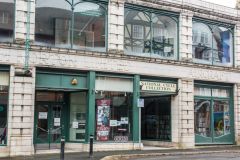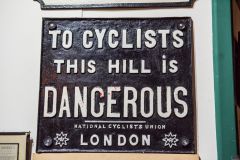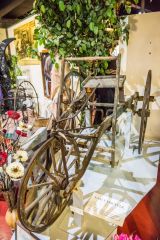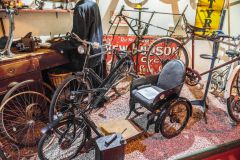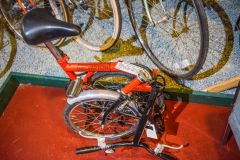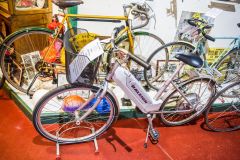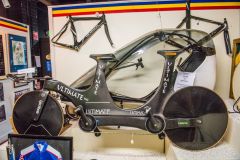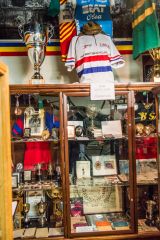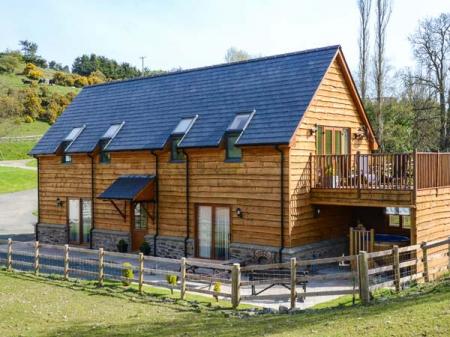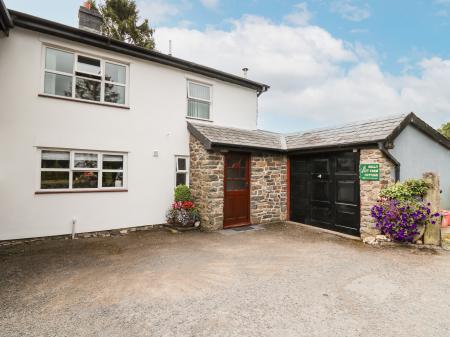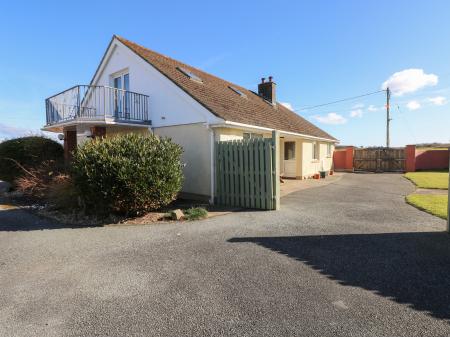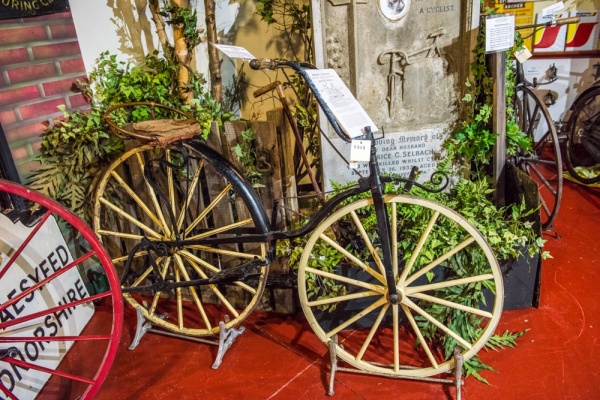
Cycling History
The earliest bicycles date back to 1819, and the newest (as of this writing) to 2005. There is a large collection of the iconic Penny Farthing bicycles, plus solid tyred cycles. In addition to the historic bicycles, there is a large collection of cycling memorabilia, cycling books and magazines.
See Boneshakers and the Hobby Horse from the very dawn of cycling, and explore a recreation of a historic street scene, with a country garage and bicycle shops. Other nostalgic displays include a 1928 Austin 7 automobile and an early radio shop. See historic cycling posters, photos, and enamel signs that evoke the nostalgia of cycling's past. Tableaux are designed to evoke different time periods in the history of cycling.
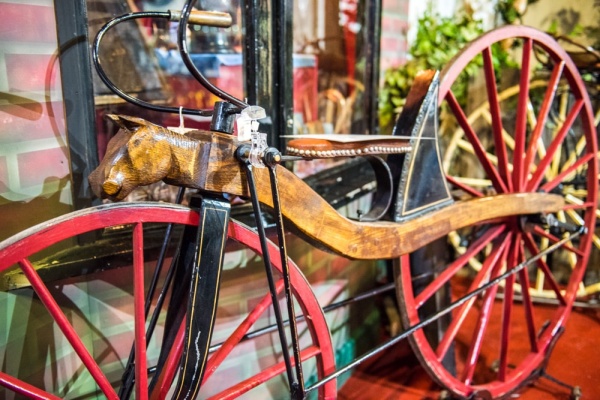
Tandems and Trikes
A fun area of the museum showcases tandems and tricycles, dating to a wooden tricycle from the 1840s using a push-pull action to propel the cycle forward. The oldest tandem cycle is an 1890s Star of Wolverhampton, made to accommodate a woman at the front with a gentleman behind. It says a lot for the prevailing attitude of the time that the man was supplied with an assisting steering mechanism! One rare cycle is a Phillips Duplex tricycle, one of only 2 UK models still in existence.
One special exhibit tells the story of the Dunlop tyre, one of the most important steps in the development of the modern bicycle. See cycles used in the Tour of Britain, track racing cycles, and motorised cycles made to pace races. Cycles are displayed against a background of enamel signs, photos, and racing posters that evoke the era when the cycle was made.
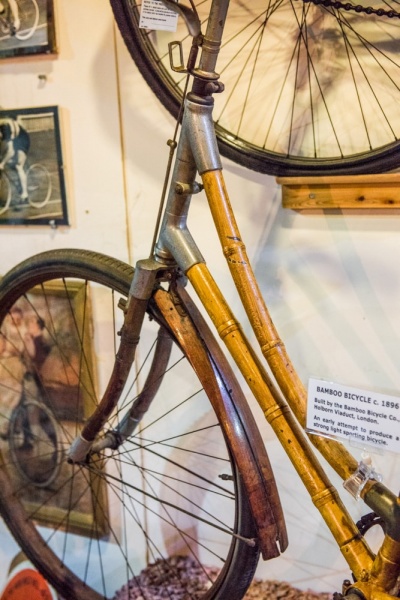
Cycling Heroes
The museum actually holds about 500 historic bicycles, but only half that number is on show at any one time, so the exact cycles on display may vary. Historic cycling displays cover racing riders like Billie Dovey, the amazing 'keep fit' rider who travelled over 30,000 miles in a single year of cycling.
Other cycling heroes include race winners like Tom Simpson and Bill Bradley, who famously won the Milk Race in 1959/60. Discover the story of George Nightingale, who rode 25 miles in less than 1 hour in 1938, and a more modern champion rider in Barry Clarke, who won the National Mountainbike Championship in 1996. There is a collection of modern mountain bikes including a children's' off-road display.
Then there are bike oddities, like a 1941 folding bicycle made for paratroopers. The idea of a folding cycle was carried to extremes by the Strida company who made a model that folded down to briefcase size. See original drawings for the Airframe, along with advertising posters that tell the story of this amazing machine from prototype to production.
The museum holds a huge collection of cycling memorabilia including trophies, photos, medals, scrapbooks, and record books. Exhibits tell the story of some of Britain's best-known riders. A large display showcases cycling accessories including lamps, oil lights, candles, clips, carriers, and every sort of cycling odds and ends you can imagine.
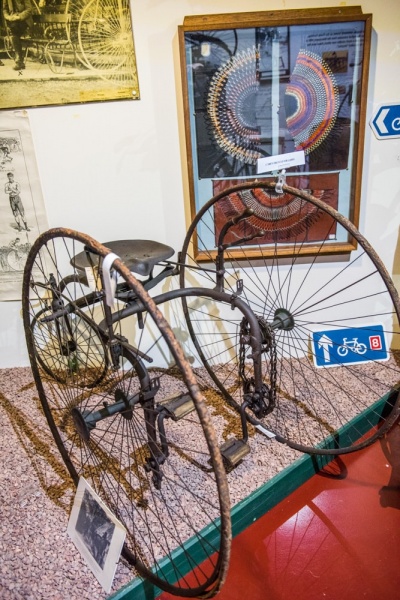
Visiting
Getting there is very easy; the museum stands on the A483, the major route through the centre of Llandrindod Wells. There is a small parking area immediately behind the museum, off Temple Street. We visited on a wet and dismal day in May, thinking to spend some time out of the damp weather. We did not expect to be so totally enthralled by a fascinating journey into history and a trip down memory lane.
Children will love the museum, but I rather suspect adults will be exclaiming just as much over the cycles they grew up with in their youth. The one exhibit that really caught my eye was a bicycle made in 1896 with a bamboo frame. This sporting cycle was made by the Bamboo Bicycle Company of London, and it shows that efforts to produce a strong, lightweight sporting bicycle frame go back long before modern experiments with carbon-fibre materials!
We absolutely loved the National Cycle Collection.
